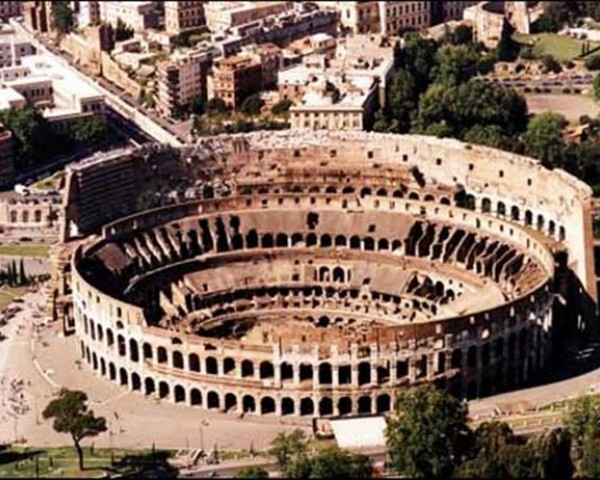
For example, Titus is portrayed as a just ruler, as he ‘obeyed his own law’, despite the calls from the audience to spare the fighters. Although the text is about the battle between Priscus and Verus, it seems to be primarily aimed at praising Titus. Martial uses this poem as an opportunity for flattery. ( Cicero in Rome ) Praising the Gladiators or the Emperor?


Apart from gladiatorial battles, the entertainment included fights involving a variety of wild and tame animals, public executions, as well as imitations of famous naval battles. In 80 AD, when the structure was completed, Titus is recorded to have celebrated its opening by holding inaugural games that lasted for about a hundred days. Thus, the Colosseum may be said to be a grand project of the Flavian dynasty. The construction of this monumental structure began in 72 AD, during the reign of Vespasian, the fist emperor of the Flavian dynasty, and it was completed in 80 AD, during the reign of Vespasian’s eldest son and successor, Titus.įurther modifications were made during the reign of the Domitian, Titus’ brother. The Colosseum, also known as the Flavian Amphitheater, is arguably one of the most recognizable monuments in the city of Rome. Where and Why the Famous Gladiators Fought The Real Lives of the Gladiators of Rome – The Unfathomable Sport of Life and Death.The Gladiators of Rome: Blood Sport in the Ancient Empire.Roman Gladiators Were War Prisoners and Criminals, Not Sporting Heroes.It is probable that they were very famous in their time, as they were chosen to fight each other as part of the celebrations held for the opening of the Colosseum. We do not know much about their careers as gladiators either. We have neither an idea about the origins of these two fighters, nor a clue about what happened after their battle. ( Public Domain )Īpart from the information provided by Martial, close to nothing is known about either Priscus or Verus. Marcus Valerius Martialis as Martial, was a Latin poet of Spanish origins best known for his twelve books of Epigrams, published in Rome between 86 and 103 AD. The battle between Priscus and Verus was immortalized by the Roman poet Martial, who described the unconventional fight in his work ‘ On the Public Shows of Domitian. This was one of the first gladiatorial battles held in the well-known arena and their brutal struggle likely helped draw in the crowds. They are famous for their drawn-out battle in the Flavian Amphitheater of Rome (better known as the Colosseum). Priscus and Verus were a tough pair of gladiators who lived during the latter part of the 1st century AD. This has happened under no prince but you, Titus: two fought and both won.” To both Titus sent wooden swords and to both palms. But an end to the even strife was found: equal they fought, equal they yielded. What he could do, he did, often giving dishes and presents.

But Titus obeyed his own law (the law was that the bout go on without shield until a finger be raised). Shouts loud and often sought discharge for the combatants. “As Priscus and Verus each drew out the contest and the struggle between the pair long stood equal,


 0 kommentar(er)
0 kommentar(er)
